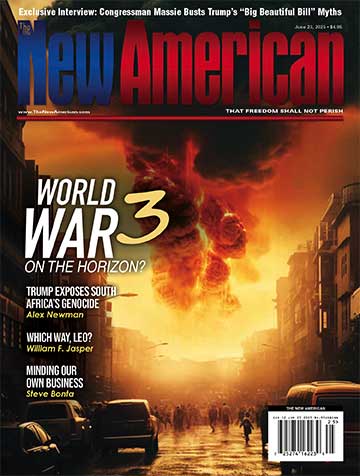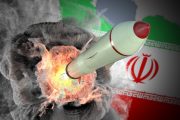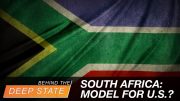
Pushpa Kamal Dahal, a former Maoist guerrilla who was appointed on December 25 as prime minister of Nepal for a third time, tweeted the next day to commemorate the birth anniversary of former communist dictator Mao Zedong.
“I extend my best wishes to Comrade Mao Zedong, the revered leader of the international proletariat, on his 130th birth anniversary,” the tweet in Nepalese read.
Dahal, who still goes by his nom de guerre Prachanda — meaning “terrible” or “fierce” — will lead the new government for the first half of the five-year term, until 2025, with the backing of the opposition Communist Unified Marxist-Leninist (UML) party and some other smaller groups, party officials revealed.
“He has been appointed and commands the support of a big majority of parliament,” Tika Dhakal, an aide to President Bidhya Devi Bhandari told Reuters.
Prachanda, the head of the Communist Party of Nepal (Maoist Centre), announced his plans to form the country’s new government before President Bhandari, based on an official statement.
He has gathered the support of 169 lawmakers in Nepal’s 275-member House of Representatives, after the elections last month concluded in a hung mandate.
The previously dominant Nepali Congress, led by former Prime Minister Sher Bahadur Deuba, was the largest party in the election but failed to form a majority in the House. Before Prachanda’s aforementioned visit to the president, Deuba was the frontrunner for the post of prime minister.
Prachanda, 68, will direct a political coalition consisting of the Communist Party of Nepal (Unified Marxist-Leninist), the Rashtriya Sawantantra Party (RSP), the pro-monarchy Rashtriya Prajatantra Party, the Nagarik Unmukti Party, the Janata Samajawadi Party, and the Janamat Party.
The Maoist Centre party won 32 seats in the 275-member House of Representatives. The UML has 78 seats, and the rest, required for the 138 majority, will be controlled by smaller groups. The Nepali Congress party will be the main opposition with 89 seats.
After 2025, Prachanda will make way for the UML to assume power.
“This is the understanding. Remaining work of distribution of key other posts and ministries is still to be worked out,” Dev Gurung, the general secretary of the Maoist Centre party toldReutersafter a gathering of the new coalition.
The new coalition came to power hours after Prachanda unexpectedly walked out of the ruling alliance spearheaded by Deuba. Deuba denied his support for Prachanda for the prime minister’s job.
Deuba and Prachanda had both campaigned in the November election vowing to preserve their old alliance for several years.
Observers contended that they did not see Prachanda as having the ability to offer Nepal stability owing to many coalition partners. Furthermore, the new prime minister faces serious economic challenges.
Analysts said that Nepal’s $40 billion economy is still reeling from the aftermath of the coronavirus-induced economic slowdown and requires the urgent attention of the new government to restore investors’ and businesses’ trust as well as increase production.
Former finance minister Yuba Raj Khatiwada, who served under former prime minister Khadga Prasad Sharma Oli, said Prachanda must concentrate on enhancing manufacturing products such as cement for export, as well as agriculture, to substitute imports.
Inflation rates in December 2022 exceeded 8 percent, the highest in six years. Nepal, sandwiched between China and India, also is experiencing diminishing foreign exchange reserves and an escalating reliance on imports of basic goods. “It is unlikely for the economy to grow as political instability will spook investment and businesses,” former central bank governor Deependra Bahadur Kshetri told Reuters.
Oli heads the UML and is an ideological ally with Prachanda, despite prior differences over the leadership of Nepal’s political Left.
After years of left-wing insurgency led by Prachanda that caused 17,000 deaths, Nepal abolished its Hindu monarchy in 2008 and introduced a new constitution in 2015. Nepal has witnessed 10 government changes since the 239-year-old monarchy was abolished.
Nepal is one of various South Asian countries where India and China both compete for influence. India has long regarded Hindu-majority Nepal, a Himalayan country of 30 million, as a natural ally owing to their close historical relations and long open border.
Prime Minister Narendra Modi of India was one of the first foreign leaders to congratulate Prachanda on his appointment. “The unique relationship between India & Nepal is based on deep cultural connect & warm people-to-people ties,” Modi said on Twitter. “I look forward to working together with you to further strengthen this friendship.”
Nevertheless, although India has traditionally been Nepal’s biggest trade and defense partner, Beijing has in recent years disputed India’s dominant role in Nepalese politics.
In 2019, for instance, Beijing was the top investor in Nepal, a position hitherto held by New Delhi. Chinese President Xi Jinping paid a visit to Nepal in 2019, the first Chinese leader to do so in around twenty years, and the two countries are working together to build the Trans-Himalayan Multi-Dimensional Connectivity Network as part of Beijing’s Belt and Road Initiative (BRI).
Nepal is planning to maintain diplomatic relations with both India and China. “We’ll maintain relationships of equi-proximity with both our neighbors,” Narayan Kaji Shrestha, a senior member of Prachanda’s Maoist Centre party, toldReuters. Shrestha was later appointed as deputy prime minister.
Kathmandu’s increasingly closer economic and political relations with China have coincided with rising demands among the leftist parties to revise the 1950 Treaty of Peace and Friendship between India and Nepal after the country’s new constitution materialized in 2015. The 1950 treaty serves as the cornerstone of ties between the two nations.
In 2020, a territorial conflict between India and Nepal over the ownership of three border territories — Lipulekh, Kalapani, and Limpiyadhura — intensified into a diplomatic clash. The confrontation happened after Indian Defense Minister Rajnath Singh inaugurated a new road to the Hindu holy site of Kailash Mansarovar (in China’s Tibet Autonomous region) that traverses the contested territories. In light of protests by New Delhi, the Nepalese government, then led by Oli, tabled and clarified the revised map in Parliament.




